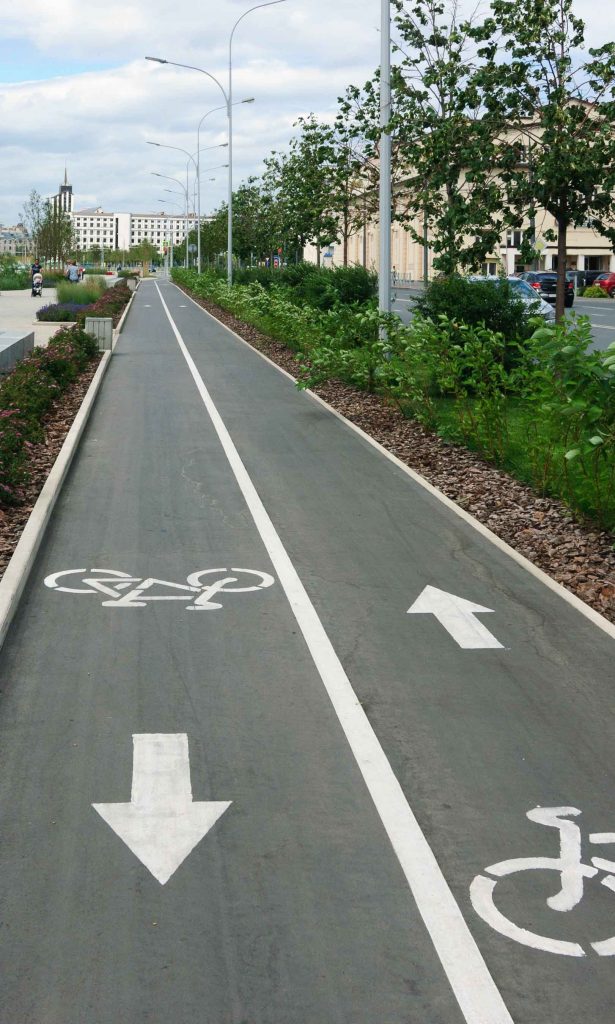
SB 288 – CEQA Exemption for Alternative Transportation Projects
Oct 22, 2020SB 288 adds 9 new alternative transportation projects that are exempt from the California Environmental Quality Act (“CEQA”), as long as certain conditions are met. These exemptions become effective January 1, 2020, but will only apply for two years and will sunset on January 1, 2023.
The new CEQA exemptions include:
- Pedestrian and bicycle facilities projects
- Projects to improve customer information and wayfinding for transit riders, bicyclists, or pedestrians
- Transit prioritization projects
- Projects to designate and convert general-purpose lanes or highway shoulders to bus-only lanes
- Projects to institute or increase new bus rapid transit, bus or light-rail service on existing public or highway rights-of-way
- Transit agency projects to construct or maintain infrastructure to charge or refuel zero-emission transit buses
- Maintenance, repair, relocation, replacement, or removal of any utility infrastructure associated with the exempt projects
- Projects that are exclusively combinations of components of the exempt projects
- City or County projects to reduce minimum parking requirements
In order to qualify for the exemption, some projects must meet several requirements such as:
- Public agency must be the lead agency and it must be its own project
- Project must be in an urbanized area
- Project must be located on or within an existing public right-of-way
- Project must not add infrastructure that increases automobile capacity
- Project must not require demolition of affordable housing units
- Lead agencies must hold at least 3 noticed public meetings
Additionally, projects which exceed $100 million must be integrated into a regional transportation plan, sustainable communities strategy, general plan, or other plan that has gone through programmatic-level environmental review under CEQA within 10 years of the project approval. Further, the construction impacts must be fully mitigated and the lead agency must complete and consider a project business case and racial equity analysis.
Due to the complexity of the requirements for each exemption, any exemption should be considered carefully to ensure that each of the requirements can be met by the public agency.
AB 2421 – New Law Streamlines Permitting Process for Wireless Backup Generators
In an effort to address concerns about the loss of wireless communication services during power shutoffs, California recently enacted a new law to streamline the permitting process for the installation of emergency standby generators to support certain existing cell tower facilities.
AB 2421 provides that adding an “emergency standby generator” to a “macro cell tower site” is a permitted use, and requires that local agencies review applications to add such generators on an administrative, nondiscretionary basis.
The new law also creates a 60-day shot clock for local agencies to review applications to add emergency standby generators. If a local agency does not act on an application within 60 days, it is deemed approved. The law does grant an extension to local agencies if an application is incomplete, and if within 10 days of receipt of the application, the agency notifies the applicant in writing of the deficiencies in the application, and ways to remedy them.
Administrative, nondiscretionary review means that applications to add emergency standby generators are not subject to CEQA, because they fall within the exemption for ministerial approval of projects.
The new law’s reach is limited in some significant ways. First, it only applies to proposed backup generators that meet the definition of “emergency standby generators” provided in the new law. Under this definition, an emergency standby generator means “a stationary generator used for the generation of electricity”, and that also meets the existing regulatory definition of an “emergency standby engine.” Further, to qualify for administrative, nondiscretionary review, the emergency standby generator must be:
- Rated below 50 horsepower;
- Comply with applicable air quality regulations;
- Have a double-wall storage tank that is less than 300 gallons large;
- Be mounted on a concrete pad;
- Comply with all applicable state and local laws and regulations, including building and fire safety codes;
- Have physical dimensions such that the generator and its storage tank are cumulatively less than 250 cubic feet in volume; and
- Be located within 100 feet from the cell tower it serves.
The new law’s reach is also limited in that it only applies to certain existing cell tower facilities, which the new law calls “macro cell tower sites”. The new law provides that “macro cell tower site” means “the place where wireless telecommunications equipment and network components, including towers, transmitters, base stations, and emergency powers necessary for providing wide area outdoor service, are located. A macro cell tower site does not include rooftop, small cell, or outdoor and indoor distributed antenna system sites.”
Local agencies considering 5G deployment issues should note that this new legislation does not apply to, or change, the legal landscape surrounding applications for such deployments. The new law expressly provides that it does not apply to “any law regulation, permit, information request, order, variance, or other requirement related to the installation of small cells for the deployment of 5G network technologies.


